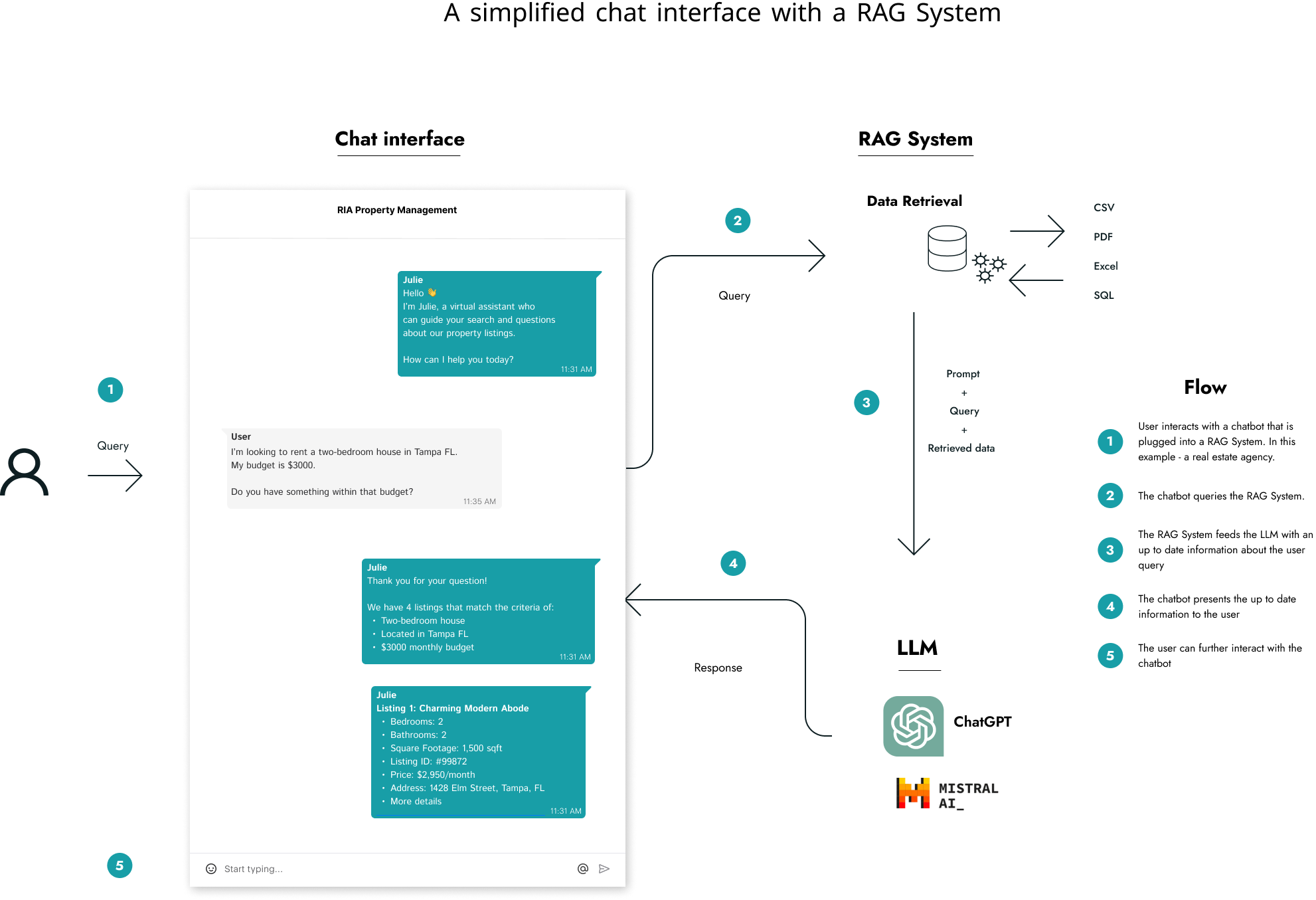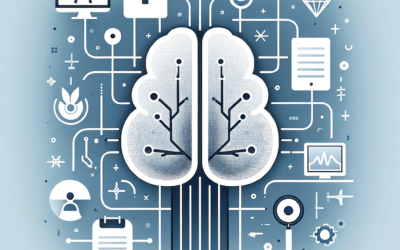In the fast-paced realm of technology, language models like ChatGPT have set new standards, yet they’re not without their flaws. These advanced AI systems sometimes stumble, delivering off-target responses known as “hallucinations.” This issue underscores a vital need: ensuring AI doesn’t just mimic intelligence but also stays aligned with the ever-evolving real world. Enter Retrieval Augmented Generation (RAG), a groundbreaking approach that seamlessly updates AI’s knowledge base with the latest information, enhancing the reliability and relevance of its responses.
RAG redefines the landscape by empowering AI like ChatGPT to tap into contemporary data, transforming how we interact with technology. It promises not just smarter AI, but an AI that keeps pace with our world’s constant changes, making every response as current as the news hitting your feed.
Why RAG Matters in Today’s Business World
The essence of RAG lies in its ability to enhance Large Language Models (LLMs) like ChatGPT with up-to-the-minute facts from external databases. This capability is crucial in addressing a common pitfall of LLMs: their reliance on static, sometimes outdated training data, leading to inconsistent or irrelevant responses. RAG ensures that businesses leveraging LLMs, like ChatGPT, can provide answers grounded in current reality, making AI interactions more reliable and trustworthy.
How RAG Works: A Very Simple Overview
- Query Processing: Begins with a user query that searches for specific information or insight.
- Data Retrieval: RAG searches external knowledge bases to find relevant, current information related to the query.
- Integration and Response: The system then integrates this retrieved data with the LLM’s capabilities, generating a response that’s both accurate and reflective of the latest developments.

Transforming Industries with RAG: Real-World Applications
- Healthcare: Speeds up patient data retrieval, aiding in quicker, more accurate diagnoses.
- Customer Service: Enhances support by providing agents with immediate access to a customer’s history and relevant information, personalizing the customer experience.
- Legal Sector: Offers rapid access to cases and precedents, streamlining research and ensuring compliance.
- Market Research: Enables companies to quickly digest vast amounts of market data, identifying trends and consumer insights to inform strategy.
- Product Development: Assists in evaluating customer feedback and identifying unmet needs, guiding the development of innovative products.
Designing a Basic RAG System: Steps for Businesses
- Assess Data Needs: Identify the specific information or decision-making processes that can benefit from RAG.
- Select Knowledge Sources: Choose external databases or knowledge bases relevant to your industry and needs.
- Integrate with LLMs: Connect your chosen LLM with the RAG system to enable dynamic data retrieval.
- Train Your Team: Ensure your staff understands how to use the RAG-enhanced system effectively.
- Monitor and Refine: Continuously evaluate the system’s performance and update your knowledge sources as necessary.
Conclusion: The Path Forward with RAG
RAG represents a leap forward in making AI and data work harder for businesses. By bridging the gap between vast data resources and actionable insights, RAG systems not only improve decision-making but also enhance competitiveness in a fast-paced world. Businesses ready to embrace RAG will find themselves at the forefront of innovation, equipped to navigate the complexities of the modern information landscape. Consider evaluating your data strategy today to see where RAG can take your business tomorrow.




